
Palm Beach
Rhythmic Gymnastics Club
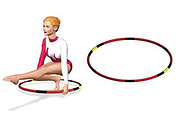
The Hoop
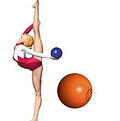
The Ball
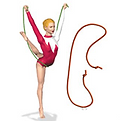
The Rope
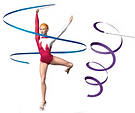
The Ribbon

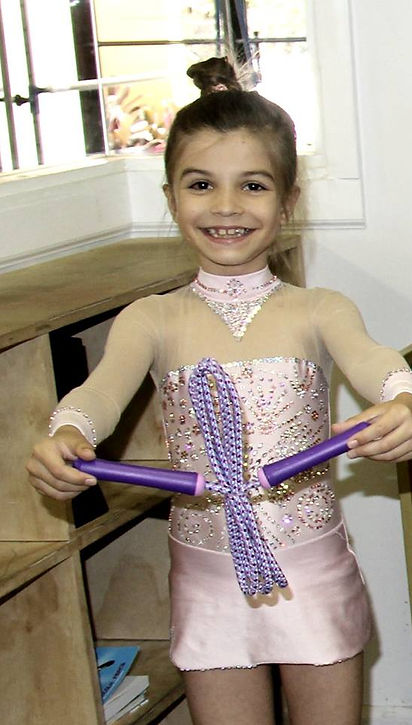
Rhythmic Gymnastics ?
Rhythmic gymnastics is a sport that combines elements of ballet, gymnastics, dance, and apparatus manipulation. The victor is the participant who earns the most points, determined by a panel of judges, for leaps, balances, pirouettes (pivots), apparatus handling, and execution. The choreography must cover the entire floor and contain a balance of jumps, leaps, pivots, balances and flexibility movements. Each movement involves a high degree of athletic skill. Physical abilities needed by a rhythmic gymnast include strength, power, flexibility, agility, dexterity, endurance and hand-eye coordination.
Competitive rhythmic gymnastics began in the 1940s in the Soviet Union. The FIG formally recognized this discipline in 1961, first as modern gymnastics, then as rhythmic sportive gymnastics, and finally as rhythmic gymnastics. The first World Championships for individual rhythmic gymnasts was held in 1963 in Budapest. Groups were introduced at the same level in 1967 in Copenhagen, Denmark. Rhythmic gymnastics was added to the 1984 Summer Olympics in Los Angeles, with an Individual All-Around competition. However, many federations from the Eastern European countries were forced to boycott by the Soviet Union. Canadian Lori Fung was the first rhythmic gymnast to earn an Olympic gold medal. The Group competition was added to the 1996 Summer Olympics in Atlanta. The Spanish group won the first gold medal.
It is made of either rubber or synthetic material (pliable plastic) provided it possesses the same elasticity as rubber. It is from 18 to 20 cm in diameter and must have a minimum weight of 400g. The ball can be of any colour. The ball should rest in the gymnast's hand and not rest against the wrist or be able to be grasped. Fundamental elements of a ball routine include throwing, bouncing or rolling. The gymnast must use both hands and work on the whole floor area whilst showing continuous flowing movement. The ball is to emphasize the gymnasts flowing lines and body difficulty.
A hoop is an apparatus in rhythmic gymnastics and may be made of plastic or wood, provided that it retains its shape during the routine. The interior diameter is from 51 to 90 cm, and the hoop must weigh a minimum of 300g. The hoop may be of a natural colour or be partially of fully covered by one or several colours, and it may be covered with adhesive tape either of the same or different colour as the hoop. Fundamental requirements of a hoop routine include rotation around the hand or body and rolling, as well as swings, circles, throws, and passes through and over the hoop. The routines in hoop involves mastery in both apparatus handling and body difficulty like leaps, jumps and pivots.
It may be made of hemp or a synthetic material which retains the qualities of lightness and suppleness. Its length is in proportion to the size of the gymnast. The rope should, when held down by the feet, reach both of the gymnasts' armpits. One or two knots at each end are for keeping hold of the rope while doing the routine. At the ends (to the exclusion of all other parts of the rope) an anti-slip material, either coloured or neutral may cover a maximum of 10 cm (3.94 in). The rope must be coloured, either all or partially. It may be either of a uniform diameter or be progressively thicker in the center provided that this thickening is of the same material as the rope. The fundamental requirements of a rope routine include leaps and skipping. Other elements include swings, throws, circles, rotations and figures of eight.
It is made of satin or another similar material cloth of any colour, it may be multi-coloured and have designs on it. The ribbon itself must be at least 35g (1 oz), 4–6 cm (1.6–2.4") in width and for senior category a minimum length of 6m (20') (5m (16.25') for juniors). The ribbon must be in one piece. The end that is attached to the stick is doubled for a maximum length of 1m (3'). This is stitched down both sides. At the top, a very thin reinforcement or rows of machine stitching for a maximum length of 5 cm is authorized. This extremity may end in a strap, or have an eyelet (a small hole, edged with buttonhole stitch or a metal circle), to permit attaching the ribbon. The ribbon is fixed to the stick by means of a supple attachment such as thread, nylon cord, or a series of articulated rings. The attachment has a maximum length of 7 cm (2.8"), not counting the strap or metal ring at the end of the stick where it will be fastened. Compulsory elements for the ribbon include flicks, circles, snakes and spirals, and throws. It requires a high degree of co-ordination to form the spirals and circles as any knots which may accidentally form in the ribbon are penalised. During a ribbon routine, large, smooth and flowing movements are looked for.
© 2014 by Rhythmic Gymnastics Palm Beach. Proudly created by Vicky's Versatile Marketing